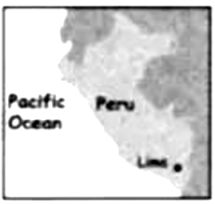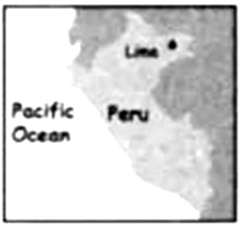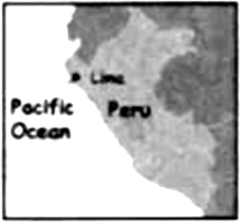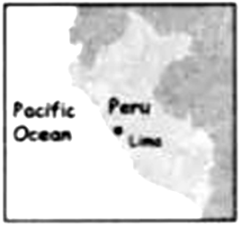题型:阅读选择 题类:真题 难易度:普通
浙江省温州市2021年中考英语真题试卷
Lima, the capital of Peru, is located in the central coastal part of the country, overlooking the Pacific Ocean. With a population of more than 9 million, Lima is one of the largest cities and the only capital in South America that faces the ocean.
Lima has a long history. The lost Inca civilization, is thought to be a mystery. There are many museums, where you can learn: how the ancient American Indians founded the Inca Empire and built Machu Picchu, a famous ancient city in the Andes Mountains; what happened in 1532 and why over 90% of Peruvians speak Spanish. Visiting the historic center, a World Heritage Site, you may find you are communicating with both the past and the present.
Lima is also a place where you can find the lifestyles and fashions, created by its people and culture. You will see Peruvian clothes, dances, and taste their delicious foods and drinks. You can see buildings in different styles, enjoy the fantastic sunset over the ancient ruins, climb the mountains, fly over the ocean, or sit in the restaurants and bars to experience Peruvians' relaxing life.
You may have heard "It never rains in Lima. " In fact, the special geographic feature makes it not as dry as it is said to be and it is warm all year round. Though it seldom rains in summer, it sometimes drizzles on early winter mornings. The drizzle and the wet air "water" the ground, which makes the crops and the plants grow. Moreover, modern technology helps to bring water from the snow and ice on the top of the Andes (over 6,000m high) for the city to use. People there never waste water.
Lima is such an amazing city that it is worth a visit.
 B、
B、 C、
C、 D、
D、
Tim, Bob, Frank and Linda lost some things.
Tim: I lost my yellow pencil box this afternoon. There are three pencils, a pen and a ruler in the pencil box. |
Bob: I lost my schoolbag this afternoon. There is a Chinese dictionary, an English book and two notebooks in my blue schoolbag. |
Frank: My bag is green. I can't find it this morning. There are two CDs and three picture books in it. My English book is in it, too. |
Linda: I can't find my schoolbag this afternoon. It is red. There is a pencil box, a map and a notebook in my schoolbag. Oh, a set of keys is in it, too. |
be, China, love, country, these, and, student, like, real, favourite, they, thank |

The 19th Asian Games(亚运会)is held in Hangzhou, China this autumn. Many sportsmen come to the Games. They are from different{#blank#}1{#/blank#}in Asia. There{#blank#}2{#/blank#}three mascots(吉祥物)of the Hangzhou Asian Games. They are Chenchen, Congcong{#blank#}3{#/blank#}Lianlian. They are very cute and friendly. Everyone{#blank#}4{#/blank#}them. The sports gym looks{#blank#}5{#/blank#}a flower. It's beautiful, and it's{#blank#}6{#/blank#}big.
There are lots of games. I can watch{#blank#}7{#/blank#}on TV. My{#blank#}8{#/blank#}game is the men's skateboarding. The champion(冠军)is Chen Ye. Chen is from China. He is{#blank#}9{#/blank#}. He is 15 years old, and he is a{#blank#}10{#/blank#}in Huizhou. I am a student in Huizhou, too. I am so proud(骄傲)of him.
Take the Day Off and Visit Mega Mall! | |
Friends to Animals Do you care for the animals? Are you good with the cute dogs? Can you take care of the homeless cats? Volunteer in Pet Shelter to look after animals Shop #74, open daily 10 a. m.—4 p. m. | European Tours Want a great holiday? See fantastic places of interests! One-stop service for you-including visas & passports Let our staff help Visit Shop #16, on the 5th Floor |
Visit Cool Bike Shop Want to own a shining bicycle? Need any fashionable clothes for riding? We' ve got it all for your riding We pay attention to your needs Shop #43, open every day 2 p. m.—9 p. m. | Art Market Prints by big-name artists Professional books by famous artists Priceless Victorian art works Keep in mind: art increases in value over the years Shop #29, Weekends morning only |
All Natural New World Supermarket Let natural products bring your skin as new Don't doubt our products-all have been scientifically tested Visit Green Shop#48, open daily 9 a. m.—4p. m. | |
试题篮